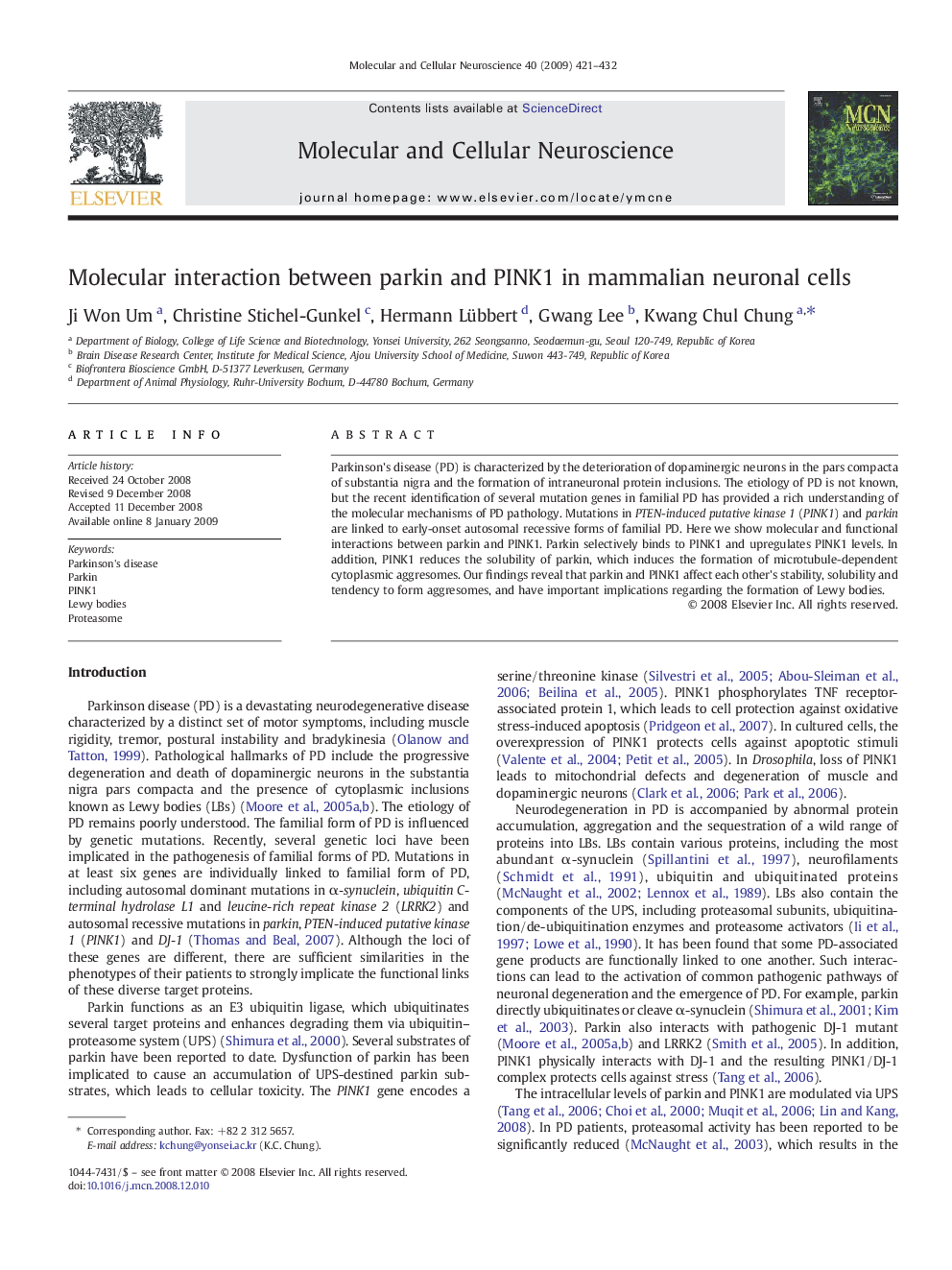| Article ID | Journal | Published Year | Pages | File Type |
|---|---|---|---|---|
| 2198885 | Molecular and Cellular Neuroscience | 2009 | 12 Pages |
Parkinson's disease (PD) is characterized by the deterioration of dopaminergic neurons in the pars compacta of substantia nigra and the formation of intraneuronal protein inclusions. The etiology of PD is not known, but the recent identification of several mutation genes in familial PD has provided a rich understanding of the molecular mechanisms of PD pathology. Mutations in PTEN-induced putative kinase 1 (PINK1) and parkin are linked to early-onset autosomal recessive forms of familial PD. Here we show molecular and functional interactions between parkin and PINK1. Parkin selectively binds to PINK1 and upregulates PINK1 levels. In addition, PINK1 reduces the solubility of parkin, which induces the formation of microtubule-dependent cytoplasmic aggresomes. Our findings reveal that parkin and PINK1 affect each other's stability, solubility and tendency to form aggresomes, and have important implications regarding the formation of Lewy bodies.
